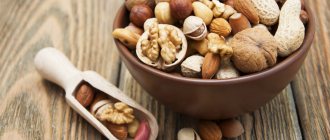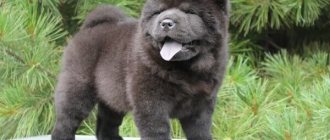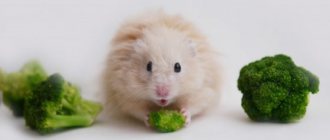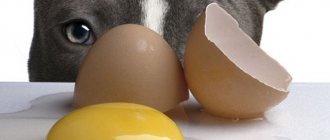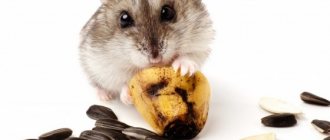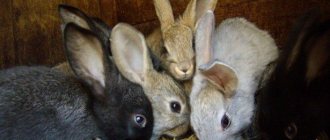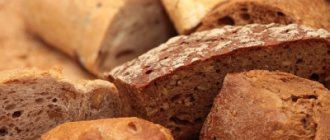Is it possible to give persimmon seeds and skins?
Many owners share small portions of their food with their pets, thinking that this will not cause harm.
But you should know that persimmon seeds and skins should absolutely not be given to hamsters. The bone contains substances that are poisonous to rodents and can lead to poisoning and even death. In addition, the persimmon seed is quite hard. And if chewed poorly, your pet may choke on it.
Despite the love of pet hamsters for various fruits, be careful when choosing foods in your pet's diet. Do not give them products without first consulting and gathering information. It's better to be prepared than to harm your beloved animal.
What to eat for the animal to wear down its teeth (twigs, pumpkin, carrots)
An excess of any green food can lead to diarrhea, so it is important to observe moderation when feeding and do not give parsley to pregnant and lactating females. Branches of fruit crops, linden, raspberries, rose hips are necessary for grinding teeth. The branches are washed, doused with boiling water and placed in a cage. If you don’t give the hamster twigs to wear down his teeth, he will do it on the bars of the cage or gnaw on everything he can reach, possibly biting the owner.
The rodent will select grains from the spikelets like its counterparts in the natural environment.
The food mixture from the store is poor in vegetables and fruits, so you need to give your pet seasonal crops - pumpkin, zucchini, apples, pears, sweet peppers and cucumbers. Vegetables are peeled and offered in small portions.
Occasionally you can please your gourmet with raisins or a slice of dried apple. But excess sugar and sweet fruits are unacceptable.
Differences in care and maintenance
Djungarian and Syrian hamsters differ in the nuances of care and maintenance.
Representatives of both breeds need their own territory in the form of a spacious cage. It is worth choosing a home with the minimum bottom parameters – 15*30 cm.
Active and mobile dwarfs need space and exercise. The cage needs to be equipped with tunnels, passages, and a running wheel should be placed near the house. If the grate is shallow, then the nimble miniature rodent will not escape from there.
Syrian hamsters, unlike Djungarian hamsters, benefit from a spacious multi-story cage with tunnels and labyrinths. They need a lot of space due to their large body size. Representatives of this breed are smart, so they will leave their home without any problems if the door has a simple latch and the space between the bars is too wide. Therefore, golden hamsters need to buy a metal cage with a plastic tray and a secure lock on the door.
In the wild, the animal is capable of running several kilometers per night when fleeing from predators or in search of food. In captivity, special accessories will help you throw out excess energy: a running wheel, slides, labyrinths, tunnels, passages.
With a lack or absence of physical activity, animals begin to develop health problems:
- obesity;
- diseases of the heart and blood vessels;
- weakening of the immune system.
In addition to accessories for entertainment, the cage should be equipped with a small house for the hamster, a drinking bowl with a retractable limiter and a feeder. The owner must make sure the pet understands how it works. The water should be changed 2 times a day to keep it fresh, and the drinking bowl should be washed regularly.
Cage bedding and a sand or ash bath will help get rid of unpleasant odors and parasites. Representatives of both types of hamsters like to bury themselves in sawdust to sleep. You should not bathe your pets in water, it causes them stress.
In general terms, the diet for Djungarian hamsters does not differ from the menu for Syrian hamsters. High-quality store-bought food contains almost all the beneficial substances that a rodent needs. The diet is supplemented with vegetables, herbs, fruits, berries, and protein foods. But for Djungarian rodents, you need to select foods that contain less sugar, as they are prone to diabetes.
The feeding regimen of dwarf hamsters does not differ from the routine of Syrians - 1 or 2 times a day. They eat in the evening or evening and early morning
It is important to ensure they have access to food so they can snack when needed. The daily portion of food for Syrian hamsters is about 100 g, and for Djungarian hamsters - no more than 30 g
Pets periodically need to be given rough food to wear down their incisors. These can be walnuts with shells, tree branches.
Djungarian hamsters are no different from Syrian ones in the need to create a supply of food
It is important to regularly check the cage for the presence of such “pantries” to remove spoiled food. If a hamster eats it, it will get poisoned
For the same reason, you should regularly remove leftover food from the feeder after a meal.
It is better to keep Djungarian and Syrian hamsters in a separate cage. However, the former are more loyal to their brothers, so they can exist in a team. To reduce the likelihood of conflicts, you need to provide your pets with a spacious cage with separate houses, running wheels and feeding accessories. Then they will intersect less often and will be able to live peacefully. Golden hamsters live separately from other pets.
Rodents of different sexes are housed together during female estrus for mating. This process takes no more than 24 hours, then it is advisable to place them in separate cells. Otherwise, the female attacks the male.
The gestation period for Djungarian hamsters is 20–26 days, and for Syrian ones – 16. The former give birth to 1 to 11 babies, and the latter – from 8 to 10.
After 3–5 weeks, it is better to resettle the female and her cubs, otherwise she may kill or eat them. After this time, the hamsters switch to adult food.
If representatives of both breeds hibernate, this may be due to a decrease in temperature, lack of light, poor nutrition, and stress. In most cases, the pet needs to be woken up, and errors in care and maintenance must be corrected.
What should you feed your animal to replenish its protein reserves?
It can be quite difficult to determine what protein-rich foods hamsters eat. This is due to the fact that animals often refuse such food. And some animals, on the contrary, love her too much. In order to decide what can be given to rodents as food, you need to familiarize yourself with the list of permitted products:
- boiled chicken (without salt and any spices);
- boiled eggs (both yolk and white are suitable for food);
- cottage cheese (0-1%);
- kefir (0-1%).
Owners also often give their pets peeled shrimp. You can use gammarus, earthworms, mealworms, butterflies or grasshoppers. It is worth knowing that you can only offer the animal food that was purchased at a pet store. This is explained by the fact that feed from a pet store is specially adapted for animals to eat and does not contain any additives.
You need to decide how often to offer protein food to your hamsters. As a rule, animals are fed once every 2-3 days (2 times a week). It is best to give your pet protein food on certain days, for example, every Wednesday and Saturday. You should not feed your rodent protein for two days in a row, for example on Monday and Tuesday.
Properties
This unusual, exotic berry (from a biological point of view, it is a berry, not a fruit) has many beneficial properties. The fruits of perennial reed plants are rich in potassium and magnesium, which is good for the cardiovascular, urinary and nervous systems of the body. Iron, also included in large quantities, helps increase hemoglobin. The beneficial qualities of the product include the fact that it can quickly relieve hunger and restore strength. These fruits are hypoallergenic.
These berries have no less harmful properties for hamsters:
- high calorie content (dangerous for individuals prone to obesity);
- a large percentage of glucose content (for this reason, giving bananas to hamsters with diabetes is prohibited);
- the ability to cause fermentation in the intestines (due to flatulence the animal will experience pain and worry);
- too soft, viscous consistency (babies’ teeth must constantly grind down on hard food, otherwise they will grow excessively).
Those fruits that are sold in our stores have already lost most of their beneficial qualities due to the long transportation process, so feeding them to pets in order to saturate their body with vitamins and microelements is useless.
After consultation with a veterinarian, you can offer the sweet, aromatic pulp to exhausted animals that have recently overcome a serious illness to quickly restore body weight.
Based on the above, you can give your hamster a banana, but only occasionally, as a treat.
Benefits of banana for rodents
We all know that this fruit is beneficial for the human body, because it contains many microelements necessary for us. But we need to find out how a hamster copes with a banana.
Despite the fact that this fruit does not contain fat, it is very high in calories, as it contains elements such as glucose and fructose in large quantities. This product is able to give the body energy. It contains vitamins C and B6, which are involved in the absorption of iron. Therefore, when a hamster eats a banana, it not only receives useful microelements, but also becomes active and energetic.
Thanks to the phosphorus contained in bananas, your rodent's teeth and bones will become stronger. And the required amount of potassium will improve the functioning of the gastrointestinal tract and heart. These fruits also help strengthen blood vessels, regulate water-salt balance and cleanse the digestive system of accumulated harmful substances. But is it possible to feed a hamster banana? Let's find out.
Bananas at night
Hamsters can eat bananas around the clock because they love them so much. But whether hamsters can have bananas at night is up to you to decide. But still, no matter how much you would like to give him at least a small piece of the fruit, it is better not to do this. Since this fruit charges the body with energy, at night the hamster will be too active: running around the cage, making noise, preventing you from sleeping. If you really want to treat your pet, you can feed him an apple or a pear, he will eat them with pleasure. But it’s better to do this in the evening, and not before bed.
Another reason why it is better not to feed rodents bananas at night is the physiological characteristics of the body. At this time, the digestive system slows down. The animal's stomach will not be ready to eat food, and this can only harm the pet's health.
Heavy food for a hamster
Banana for Djungarian and Syrian hamsters
Djungarian hamsters enjoy eating these overseas fruits. But they are not recommended to abuse these fruits. These animals are prone to high blood sugar levels. Therefore, you should not spoil them with such goodies too often. The interval between eating bananas should be at least a week.
Syrian hamsters also love to eat tasty and sweet food. But for them, one serving of sweets per week is also recommended. The pulp of the fruit should be given in small pieces weighing approximately 5 g. The whole fruit should not be given to animals, because a small hamster and a large banana are not the best combination. The rodent simply cannot eat it at once and will hide the remaining parts of the fruit for storage. The fruit will begin to quickly deteriorate, and if the baby eats it, it can get food poisoning.
Prohibited foods can be deadly
The list of what is prohibited is very extensive; in fact, there are much more prohibited products than can be covered in one article. But the list of what can be given to Djungarian hamsters from food is also impressive, so there is no point in experimenting with unsafe products. The ban may seem unreasonable, but there is always a reason.
Risk of poisoning
Some food that is familiar to us is real poison for the Djungarians. Almonds and apricot kernels contain hydrocyanic acid, watermelon accumulates nitrates, honeysuckle and elderberry cause suffocation and cramps. Potatoes may contain solanine. The problem is the small size of the animal and its sensitive body. Even a microscopic dose of a dangerous substance can cause intoxication.
Cause constipation
Any astringent products (persimmon) slow down intestinal motility due to the high content of tannins. Constipation is very dangerous for rodents.
Causes diarrhea
Foods that irritate the digestive tract or have a laxative effect should not be given to dwarfs. This is hot ginger and any spices that are found in human food (paprika, salt).
Cause fermentation
Intestinal bloating leads to the death of the rodent in a matter of hours. Foods that cause gas include cabbage, brown bread, and beans.
Too fat
The rodent's liver is not able to cope with foods that are too fatty. Even seeds, which are what Djungarians can eat, are given in moderation, and foods such as oil and fried foods are completely excluded. Avocado contains too much fat.
Cheek pouches hurt
Sometimes the product itself is not dangerous. But given the small size and habits of the pet, it causes problems. Dry pasta should not be given to your dwarf hamster, not because wheat is dangerous, but because it can injure its cheek pouches by stuffing spaghetti there.
Abscesses and inflammation of the sac are a serious problem that requires treatment. Owners, faced with such a nuisance, even first peel the seeds from the husks before feeding the jungarians.
Allergy risk
Essential oils, brightly colored fruits, vegetables and berries can cause allergies. If after eating strawberries your hamster’s eyes run, the skin turns red and itches, it should be excluded.
Sometimes a product is prohibited for several reasons: cheese is both salty, fatty and rich in lactose, which is very difficult to digest.
Reasons for banning pomegranate
First you need to figure out what it is. Pomegranate is an exotic fruit that contains calcium, vitamins, iron, phosphorus, and magnesium. For humans this is a treasure trove of useful substances, but for a hamster the product is dangerous.
The body cannot cope with the acidity contained in the fruit and can cause severe stomach pain. A large amount of vitamins also leads to hypervitaminosis, and bones can damage an already weak digestive system. You should not give pomegranate bark, so that your pet does not suffer from severe constipation. Pomegranate seeds contain fat, which adversely affects the functioning of the animal’s liver, and the essential oils of the fruit cause an allergy attack.
But maybe it’s still possible, if you’re careful
The hamster is a very curious animal and puts almost everything into its mouth. The teeth need to be ground down with something. So, if a pomegranate seed falls into his paws, he will eat it without hesitation. But, as we have already said, not everything that is useful for people is also useful for hamsters.
But it’s delicious... is it really impossible? Even a grain?
Yes, pomegranate is the king of fruits. We will modestly keep silent about Thai durian, where can you find it here? By the way, I wonder if a hamster can have durian?
Stop. We got distracted. Let's continue. The problem with pomegranate is that it is very rich in all kinds of vitamins and microelements. It is in them that its danger for the hamster lies.
For reference: pomegranate contains about 15 amino acids, five of which are essential for the body. Also, it is rich in vitamins K, C, B9 and B6 and minerals (potassium, copper, phosphorus). With all this richness, it is a low-calorie fruit. There are only 72 kilocalories in 100 grams.
So why is it so harmful to our furry pets:
- Tannins found in the fetal crust slow down the peristalsis of the intestinal tract, which leads to constipation. Considering the size of the animal and its rapid metabolism, this constipation could cost him his life. Also, the peel of the fruit contains some alkaloids, which can simply kill the poor fellow.
- The fat contained in pomegranate seeds puts a lot of stress on the liver.
- A high content of vitamins will lead to hypervitaminosis (to put it simply - too much), which is also not good for poor Khoma.
- Too much acidity in pomegranate juice is bad for the digestive system.
- Don't forget about common allergies. In the wild, hamsters are unlikely to eat pomegranate, so there is no immunity to new substances in the animal’s body. If you see that your pet is often itching, his eyes are red and tears are flowing, then most likely the poor thing is suffering from allergies or poisoning. Urgently remember what you fed and try not to give this food again.
Yes, pomegranate is a wildly useful thing, but not for hamsters.
Once again: even one pomegranate seed can lead to serious consequences, including the death of your pet.
Interesting fact: Syrian hamsters are less susceptible to pomegranate, since they still have a chance to try it in the wild. But it’s still not worth giving a Syrian a pomegranate on purpose. It’s better not to even show it to the Djungarians at all.
Beneficial properties of bananas
The fruits of this plant (biologists call them berries, and sellers call them fruits) are rich in magnesium and potassium, which is beneficial for the cardiovascular, musculoskeletal, nervous and urinary systems of any living organism. Iron, which is part of the product, increases the level of hemoglobin in the blood and helps relieve fatigue, hunger, and restores strength.
Phosphorus, which is contained in the pulp, is useful for the strength of bones and teeth. A small amount of the product promotes good digestion and makes blood vessels flexible and elastic. These tropical fruits are high in calories and promote rapid weight gain in hamsters (for individuals prone to obesity, this is dangerous!), who have overcome one or another disease.
Zoologists recommend feeding hamsters with exotic fruit in the morning. The peel of the fruit that is used for the diet of pets should not be black and rotten, and the fruit itself should be white and moderately hard
Fluffy babies can eat bananas from the second month of life, but it is important for owners to follow a few simple rules when feeding their pets with these fruits
Diet composition
Here's what Djungarian hamsters eat at home:
- grain mixture (dry food);
- succulent food (greens, grass, fruits, vegetables, berries);
- protein feed (dietary meat, eggs, insects);
- vitamin supplements;
- mineral stone, branches of fruit trees.
The basis of nutrition is industrial food for dwarf hamsters, a mixture of grain crops and freely available fresh drinking water. On such a diet, a hamster can live for a very long time, even without additional treats.
It is important to observe the measure: fruits should not make up more than 5% of the dzhungarik’s diet, even allowed ones are given in pieces no larger than 1 cm. Vegetables are given every other day, and berries - no more than once a week
Any new product is introduced into the diet in a tiny portion, with caution. You also need to change dry food to a mixture from another manufacturer gradually, over the course of a week, to avoid digestive upset.
What to feed a Syrian
In the wild, the diet of hamsters includes cereals, fresh fruits, vegetables, berries and herbs, as well as food rich in proteins - worms, small insects, and sometimes mice.
At home, organizing your hamster's nutrition will not be a hassle.
The basis of the diet is grains. You can purchase cereal mixtures at a pet store. Special mixtures contain wheat, oats, corn, millet, sunflower seeds, peas, peanuts, buckwheat, peanuts, sesame and more. These products are necessary to replenish the necessary energy and maintain the health of the rodent.
Pay attention to the amount of nuts and seeds in the mixtures. The volume of these components should be minimal. Nuts and seeds contain large amounts of fat. Excessive consumption of this mixture contributes to an increase in fat mass, which will negatively affect the baby’s health.
You can prepare cereal food yourself. You can add pumpkin, watermelon and melon seeds to this mixture. The amount of ingredients can be adjusted depending on the pet's preferences.
Add fresh greens to your rodent's diet daily: plantain, burdock, green salad, dill, parsley, clover, knotweed, nettle (processed with boiling water), wheat germ, oats and other seeds.
You can add dandelion, wormwood and tarragon to the food with caution.
If you collect grass yourself, choose places far from the road, for example, in a summer cottage. Before letting your pet eat grass, rinse it thoroughly and dry it.
Fresh branches of fruit and deciduous trees are necessary for the rodent to grind down its constantly growing teeth. Hamsters can be given branches of the following trees: apple, maple, poplar, pear, cherry, ash, birch and some others.
Cut the twig in environmentally friendly places and treat the treat before feeding: rinse and remove twigs.
Hamsters enjoy eating nutrient-rich vegetables. It is recommended to feed rodents with carrots, cucumbers, pumpkin (without peel), sweet peppers, zucchini, radishes, turnips and beets. Choose foods carefully before feeding. Vegetables containing chemicals such as nitrates can negatively affect the health of hamsters. Pesticides, even in small quantities, can cause poisoning.
It is not recommended to add fruits with rotten areas to food. Vegetables must be peeled and cut into small pieces. Small slices will be more convenient for your pet to eat.
Sweet fruits contribute to weight gain, so hamsters should not eat them daily. The following fruits can serve as treats for your pet: apples, pears, bananas, peaches and apricots.
Remove seeds and seeds from the fruit, cut into small pieces, peel and feed to your pet in small portions.
In nature, hamsters feast on berries. You can feed strawberries, wild strawberries, raspberries or grapes. Choose ripe fruits and wash them thoroughly.
A small body also needs protein foods. The most useful sources of protein for a rodent are: chicken and quail eggs, boiled chicken breast, low-fat fish, low-fat cottage cheese, fresh green peas, chickpeas soaked in water, insects and worms.
Do not overuse protein foods. The recommended intake is 2-3 protein days per week. Alternate foods.
What to feed the animal
Juicy foods are not enough to maintain water balance in a rodent’s body. It is imperative to place a water bowl in the rodent's cage. It needs to be updated every day.
Fruits for your hamster
Hamsters can be given various fruits (with the exception of citrus and exotic ones), but in small doses. The high sugar content makes this complementary food unsafe. Domestic Djungarians are given less of it than individuals of the Syrian breed - within 5% of the main diet. Campbell's hamsters are fed even more carefully.
The main fruit products that are suitable for Syrian and Djungarian hamsters include:
- apple - choose sweet and sour varieties, introduce them from 4 months, do not give to lactating females;
- apricot – a little and not overripe, it is better to give dried apricots out of season;
- peach is better than nectarine, it has less sugar;
- pear – firm yellow or green, uncommon;
- banana – preferably a little greenish, just unripe;
- plum - a little at a time, so as not to provoke diarrhea;
- melon – due to excessive sweetness, allowed only once every 5-7 days;
- watermelon - also rare, but from your own garden (it’s hard to find a store-bought one without nitrates).
Berries will help diversify your diet. Strawberries are offered once every 7 days, a piece with a diameter of 1 cm. The rest of the berries from the list are given 1 piece per week, the portion for the Syrian hamster is doubled. Allowed:
- cherries and sweet cherries (pits removed);
- currant;
- not sour gooseberries;
- grape;
- raspberries;
- blueberry;
- blackberry;
- cowberry;
- blueberry.
Of all of the above, only dietary fruits are suitable for Campbell's hamsters. These are nectarine, blueberry, lingonberry, cherry, hawthorn. It is worth remembering that exotic fruits (mango, avocado, kiwi, pineapple and others) are prohibited from being offered to all rodents. They can cause severe allergic reactions and digestive problems.
Plant food
Fruits in syrup, compote berries, and jam should not be offered to rodents. Any preserved food is prohibited because it contains sugar and salt. Raw seasonal fruits are preferred for feeding. Some of them are placed in the cage boiled (zucchini, beets, carrots, pumpkin). The cooking time in this case is minimal. The water is not salted.
If fresh fruits and vegetables are purchased at the store, it is better to cut off the skin (it often contains pesticides). For home harvest, this step is not necessary. Plant foods, including those from your own garden, must be thoroughly washed. After all, harmful bacteria and helminth eggs may remain on its surface.
All fruits must be fresh, not chapped, and free of rot. The pits of cherries, apples, cherries, plums, and apricots must be removed. The hamster can be poisoned by them. If a pear, pepper or other delicacy is cut into several pieces, the remaining pieces are stored in the refrigerator for several days.
It is important to remember that excessive fruit feeding causes indigestion and increased gas formation in hamsters, and increases the risk of diabetes and obesity. In small quantities, fruits help strengthen the immune system, improve intestinal motility, and are involved in the prevention of many diseases.
Is it possible to give hamsters persimmons?
There is an opinion that you need to let the hamster try the product. If he eats it, then you can feed him. This approach is fundamentally wrong. Most hamsters will eat any food they can get their hands on.
In nature, they can even consume poisonous foods to their detriment. Therefore, before feeding your pet this or that fruit or vegetable, you should first find out whether this can be done and consult with an experienced specialist.
Persimmon should not be given to Djungarian hamsters
Despite all the beneficial properties of persimmon, giving it to hamsters is strictly not recommended for several reasons:
- Persimmons contain a large amount of sugar, which is one of the main prohibitions in the diet of domestic hamsters. This is especially true for Dzungarian and Syrian species.
- Your hamster's diet should include foods that they eat in their natural habitat. Persimmon is not one of these fruits, as it grows in other regions.
- Persimmons contain quite a large amount of tannins. They directly affect the functioning of the digestive organs. If you look deeper, tannins are used to regulate and slow down intestinal motility.
What happens if a hamster eats a persimmon?
If you were in a hurry and decided to treat your pet to persimmons, be prepared for problems with the gastrointestinal tract.
First of all, carefully monitor the behavior and condition of your hamster. Any violation of habitual behavior signals that the animal has a problem. In severe cases, you should contact a veterinarian.
As we have already said, persimmon contains a large amount of tannins, and this can cause severe constipation in the animal or intestinal obstruction.
First aid:
- Take a syringe without a needle.
- Take 1-2 ml of Vaseline oil and squirt it into your pet’s mouth. In extreme cases, you can use any vegetable or edible oil.
- Repeat after 20 minutes.
- Give a light abdominal massage, clockwise.
- If bowel movement does not occur within 4 hours, contact your veterinarian. The animal may have intestinal obstruction, which cannot be cured at home.
Also, the regular presence of persimmons in a hamster’s diet will lead to increased blood sugar levels and diabetes. This is a common problem with pet rodents.
You should not feed Syrian hamsters persimmons.
If your pet has eaten a small amount of persimmon, then it may not cause serious problems. First of all, you should provide the animal with plenty of fluids and not give food for several 5-12 hours.
Can hamsters be given apples?
Hamsters can be given apples, but too much can cause stomach upset or diarrhea.
Dwarf hamsters prone to diabetes should be fed apples sparingly and only as an occasional treat. Never feed your hamster apple seeds as they contain poison. And you should also thoroughly wash any fruits and vegetables you use as your pet's food, as they may contain harmful pesticides on their surface. Hamsters love to save and store their food, so you can give your hamster a large piece of apple and see how much he eats and whether he saves it.
Effects of Pomegranate on Hamster Species
Recently, Djungarian hamsters have been gaining popularity. These simple rodents quickly won the hearts of breeders thanks to their attractive colors and active lifestyle. You can meet them in Siberia. Hamsters living in the wild feed on insects, grass, and seeds. They have never tried pomegranate and are unfamiliar with its taste. A new fruit can cause a negative reaction, even death.
The Syrian hamster lives in Syria and enjoys a hot climate. The hamster is distinguished by its cleanliness and unpretentiousness. Breeders of such rodents note that this is an ideal pet; it eats more food. The diet includes: nuts, insects, seeds, herbs, cereals, vegetables and fruits. The Syrian hamster's body is stronger, and it is easier to cope with new foods.
Despite their different habitats, the body structure of rodents is the same. Therefore, the reaction to pomegranate and the consequences after it are almost identical.
What is better to exclude?
When compiling a list of foods that should not be given to your hamster, you can mention:
- bakery products;
- pasta;
- peas;
- beans.
An immutable requirement is a ban on all foods that contain sugar, salt and other spices. It is unacceptable to feed jungarians with fatty or fried foods. Everything that is intended for human nutrition is prohibited. Confectionery products pose the highest risk: cookies, muesli and kozinaki are included in any list of prohibited products. Honey, ice cream, and all chocolate products are dangerous for animals.
Since hamsters can be fed quite a lot of foods, there is no need to experiment with junk foods. Even if something seems unjustified or incomprehensible, there is always a reason. Any ban is developed on the basis of many years of practice.
What is quite common to see on the table may not be tolerated by the Djungarian’s body. Almonds, as well as apricot kernels and other parts of plants containing hydrocyanic acid, are extremely dangerous for hamsters. Nitrates accumulate in watermelon pulp. Because of honeysuckle and elderberry, animals may experience convulsions and suffocate. Solanine contained in potatoes is dangerous.
It is important to consider that a hamster is much smaller than a person and even most pets. Therefore, a seemingly insignificant portion of toxins can destroy him
All astringent substances (for example, those contained in persimmons) inhibit digestion. Tanning components disrupt normal intestinal function and pose a huge risk for animals. But the opposite failure (diarrhea) is also harmful for the hamster.
Therefore, the following are prohibited:
- hot ginger;
- salt;
- paprika.
This is especially true for the saltiest varieties. But even those that are not recognizable to the taste as very salty are also unacceptable. Moreover, cheese is also an abundance of fat.
If a hamster's intestines are swollen, then even the most qualified veterinary care often does not save him. You can provoke bloating by giving the animal:
- black bread;
- cabbage;
- beans.
The liver of a herbivorous creature is evolutionarily not adapted to very fatty foods. Even the seeds of various plants, usually included in the lists of permitted foods, can be consumed only on a limited basis. And vegetable oil and butter, all types of fried foods are excluded by 100%. Among fruits, avocado has excessive fat content.
It is worth remembering that the danger can be not only due to chemical and biological reactions. Thus, the Djungarian hamster eats wheat willingly and calmly. However, if you give it spaghetti or other dry pasta, the animal can injure the bags behind its cheeks.
For the same reason, any bones (not just vegetable ones), spicy and too hard types of food are unacceptable. Inflammation, especially one that develops into an abscess, is very difficult to treat. Many hamster breeders, in order not to repeat tedious and expensive therapy, even begin to give seeds to their pets in a purified form.
Essential oils of any kind and bright, rich dyes can provoke allergic reactions. Strawberries and tangerines most often initiate them. Characteristic manifestations are constant tears, redness of the skin, and scabies. Antihistamines are not available for hamsters. Therefore, the only thing left is to exclude problematic products.
Lactose, which is rich in milk and dairy products, including cheese, is extremely difficult to digest. Drops for rodents are given a maximum of once every 30 days. Strictly prohibited:
- grain mixtures for other rodents and parrots;
- Brazil nuts;
- oak acorns;
- all citrus crops;
- pineapples;
- kiwi;
- pomegranate;
- mushrooms;
- branches and bark of coniferous trees;
- sausages;
- garlic and onion;
- green plants grown within the city or in other places with unfavorable environmental conditions.
What should you not give?
Animals will eat almost everything you offer them; they do not know the dangers of many foods for their stomachs. But the owner should know exactly which products are prohibited, and accordingly protect his pet from them:
- Any sausage products.
- Milk and dairy products.
- Fatty meat, lard.
- Mushrooms.
- Onion garlic.
- Honey.
- Sweets, chocolate, cookies.
- Berry seeds.
- Canned food.
- Fresh bakery.
- Pasta.
- Salt, sugar, spices.
- Various fats.
- Exotic fruits.
- Fried, fatty, spicy food.
An incorrect diet will contribute to the development of obesity, allergic reactions and digestive problems. In advanced cases, the animal simply dies.
Providing your hamster with proper nutrition is not difficult at all. The main thing is to exclude prohibited foods from his diet and make the food as varied as possible. Good nutrition will give your pet excellent health and enable it to live as long as possible.
Rodents are considered omnivores. But some foods cannot be given to hamsters. Feeding hamsters the following foods can cause health problems and even be fatal.
Syrian hamsters should not be given the following foods: fats of any origin, salt, sugar, chemical additives, spices, pine needles, plant bulbs, sour fruits, berries and plants, citrus fruits, cabbage, mint, garlic, most dairy products, berry and fruit seeds, mushrooms , potato sprouts and peels, baked goods, food for birds or other animals, canned food and smoked meats.
The above products should be completely excluded from the animal’s diet. Adequate nutrition is a very important element of a comfortable and long life for a hamster.
Well, at least a little...
You can try a drop. Moreover, 1 drop of juice is exactly one drop. Not more. In winter, the amount of vitamin C in the hamster’s body decreases. Fresh grass and vegetables are more difficult to get than in summer. But pomegranate is always full of these vitamins. Even in winter. If you have decided, at any cost, to expand your pet’s diet and provide him with vitamin supplements, here is one piece of advice:
Experts suggest diluting 2 drops of juice in half a glass of clean water. Just don’t give all this half a glass to the hamster at once. Let him drink plain water. This way you can compensate for the lack of vitamins in your hamster.
All processes occurring in the hamster’s body occur very quickly, including diseases. In order for your pet to be healthy and cheerful, it is necessary to exclude this fruit, which is healthy for humans, from the list of food products. By taking care of your hamster and following the recommendations, you can increase its lifespan.
What fruits and vegetables can a hamster eat?
The basis of a hamster's diet should be solid plant foods:
- Rice, oats, millet, wheat, barley, fresh and dried corn, as well as other cereals.
- Boiled beans, peanuts, peas and other legumes.
- Greens, excluding sorrel, lettuce, parsley and green onions.
- Pumpkin and sunflower seeds.
Most owners have a reasonable question about what berries, vegetables and fruits can be given to hamsters without harm to health.
Carrots are considered the most useful vegetable for both Syrian and Djungarian hamsters. It contains vitamins and microelements that have a positive effect on the vision, hearing, condition of the skin and fur of these rodents. You can give hamsters carrots not only raw, but also boiled. It is used to make preparations for the winter and add little by little to the main grain feed.
In addition, these rodents can be given some carrot tops from vegetables from their own garden. They can also be fed cucumbers, turnips and zucchini. A couple of times a week, small pets can be treated to red pepper, radish, tomato, beet or pumpkin.
Cabbage, which causes bloating in these rodents, and difficult-to-digest potatoes are best excluded from your pet’s diet.
Fruits and berries are beneficial for the hamster's body. The former contain a large amount of fiber, which improves digestion, and the berries contain many vitamins and minerals. However, it is better for these animals to eat fruits in small doses and not too often, since they contain a lot of sugar, which can lead to the development of diabetes. Excessive fruit consumption has a particularly detrimental effect on the health of jungarians.
Among the fruits, the most beneficial for small pets are apples with a sweet and sour taste, which have the following effect on them:
- Strengthen the immune system.
- They prevent the development of cancer thanks to the antioxidants they contain.
- Improves blood composition.
- Positively affect the functioning of the heart.
However, you can give hamsters apples only once a day, 10–15 g, since frequent eating of them can cause increased gas formation in rodents. Also, small pieces of apples can be dried for the winter and added to food.
Pear affects the body of hamsters in different ways: some do not experience any negative consequences, while others, on the contrary, experience a significant deterioration in their well-being. This fruit can cause allergies in your pet, irritation of the gastrointestinal mucosa and increased gas production. That is why each owner must decide for himself whether he can introduce a pear into his hamster’s diet or not.
The positive effect on the body of rodents is as follows:
- Eliminates constipation.
- Strengthens the walls of blood vessels.
- Has a diuretic effect.
- Has an anti-inflammatory effect.
Fresh pears can be given to hamsters 10-12 g no more than 2 times a week, and dried pears - 1-2 slices every 2 weeks.
You can treat your pet to a small piece of peach or nectarine only 2-3 times a month.
Consumption of the following seasonal seedless berries is very useful for ornamental rodents, because they strengthen the immune system and contain many vitamins and minerals:
- strawberry;
- blueberry;
- blackberry;
- cranberry;
- currant;
- wild forest rowan.
You can also give your hamster grapes of green varieties. It contains more liquid than nutrient fiber, so it is an excellent thirst quencher. Grapes can only be given to hamsters from seedless varieties. Substances that are part of grape and other seeds are very poisonous to these animals. Only sultanas can be used to treat rodents.
The maximum allowed dose is 1-2 fresh or dried berries 1-2 times a week.
It is forbidden to give your hamster pomegranate, barberry and sea buckthorn due to increased acidity, which negatively affects the mucous membranes of the gastrointestinal tract. Raspberries have a strong laxative effect on the body of rodents, so they should also be excluded from the pet’s diet.
You should also not give your pet juices, including freshly squeezed ones, even if they are made from approved fruits, vegetables and berries.
What vegetables can be included in your pet's diet?
Perhaps we should start with the fact that the habitat of hamsters in the wild is the steppes; accordingly, the main food of a hamster is cereals and legumes, that is, solid and roughage with a small liquid content. The animal consumes juicy foods, such as berries, fruits or vegetables, only occasionally, when it can get them, and only in the warm months, since in winter, for obvious reasons, this kind of food is not available to the animal.
It is from these considerations that you should proceed when forming the diet of your little pet: wet food should be given to the hamster little by little, as a treat, and not as the main type of food, which should consist of cereals or grain mixtures, hay, ready-made granules of various protein supplements, for example, dried gammarus. The second rule that should be mentioned before moving on to a specific list of permitted products is that when determining which of them is useful for a hamster and which is harmful, you cannot rely on the desires of the rodent itself.
Important! Animals, like people, tend to eat with a huge appetite exactly what is actually contraindicated for them.
Nature regulates this problem very simply: over many centuries of evolution, the animal’s diet is formed taking into account the food actually available. However, in the case of a pet, all responsibility for selecting products suitable for the animal’s digestive system falls entirely on its owner. Having understood the two principles mentioned above, it becomes much easier to create a list of treats acceptable for a hamster to eat.
At a minimum, those items that are absolutely inaccessible to a rodent in nature, that is, all kinds of exotics, should be excluded from this list. Each vegetable offered to your pet must be fresh, seasonal and, if possible, organic (grown in your own summer cottage or purchased from a trusted farmer), since nitrates and other chemical additives that store-bought agricultural products may contain are definitely contraindicated for a hamster’s weak stomach .
With due attention and gratitude, the rodent will treat vegetables close to the region of its habitat, such as:
- beet;
- carrot;
- celery (white root)
- zucchini;
- squash;
- cucumbers;
- tomatoes;
- radish;
- radish;
- turnip;
- Bell pepper;
- pumpkin;
- eggplant (only fully ripened);
- Jerusalem artichoke;
- cabbage (Chinese, cauliflower, white cabbage, broccoli);
- corn (fresh or boiled, popcorn is also acceptable, but neutral - neither sweet nor salty).
Despite the fact that hamsters simply adore all of these vegetables, the safe amount of each of them in a hamster’s diet is not the same. So, only carrots and radishes can be used as a daily treat; all other foods should appear on the pet’s menu no more than 1-2 times a week. Moreover, the list of acceptable and prohibited vegetables (this also applies to fruits and berries) is not strict and absolute.
Did you know? A hamster can carry a load equal to one fifth of the animal’s own body weight in special bags behind its cheeks. The volume of reserves that this rodent makes for the winter is impressive: up to 90 kg per individual.
Some hamster owners constantly use many types of products as treats for their pets, claiming that rodents digest such food well, while other experts insist that it is pure poison for the animal. The above applies, for example, to cabbage, tomatoes and eggplants. In the end, everyone can make a decision for themselves, but it still doesn’t hurt to be careful.
Hamsters can eat vegetables both raw and boiled, but in the latter case the product should only be lightly boiled, and in no case should salt be added to the water. In addition, your pet's holiday treat may contain fresh greens, for example, arugula and other types of salads, asparagus shoots, dill, parsley, spinach or meadow herbs (alfalfa, burdock, clover, dandelion, nettle, plantain, wheatgrass, knotweed, etc.).
And, of course, it wouldn’t hurt to pamper your pet with legumes well known to its wild ancestors - peas, both dry and fresh, beans, lentils or, in fact, beans. It is permissible to pre-soak such products in water, although even without this precaution the hamster’s strong teeth will handle the treat perfectly.
Video: what vegetables can be given to hamsters
Well, at least a little...
You can try a drop. Moreover, 1 drop of juice is exactly one drop. Not more. In winter, the amount of vitamin C in the hamster’s body decreases. Fresh grass and vegetables are more difficult to get than in summer. But pomegranate is always full of these vitamins. Even in winter. If you have decided, at any cost, to expand your pet’s diet and provide him with vitamin supplements, here is one piece of advice:
Experts suggest diluting 2 drops of juice in half a glass of clean water. Just don’t give all this half a glass to the hamster at once. Let him drink plain water. This way you can compensate for the lack of vitamins in your hamster.
All processes occurring in the hamster’s body occur very quickly, including diseases. In order for your pet to be healthy and cheerful, it is necessary to exclude this fruit, which is healthy for humans, from the list of food products. By taking care of your hamster and following the recommendations, you can increase its lifespan.
Food requirements
Preparing a diet for a hamster is not necessary if you use special food.
Standard kits contain a complete set:
- vitamins;
- essential nutrients;
- microelements.
The use of such compositions allows you to improve the animal’s diet and balance it. In addition to food, water must also be provided. It cannot be replaced even by the most succulent plant foods. If a hamster receives too little water during the day, it may even die or become disabled. For food, in addition to specialized food, the Djungarian species will eat:
- fruits;
- various vegetables;
- shoots of green plants;
- animal protein.
What foods make up the natural diet
The hamster is not picky. In nature, he loves to eat grain crops: buckwheat, wheat, rye, corn, as well as legumes: peas and beans. Even tree roots, green juicy grass, fruits, and berry branches are used as food for rodents. Animals store a lot of things in their burrows: seeds and nuts. In gardens, animals can damage potatoes and other vegetables. A small pet needs protein, so it can eat small crustaceans, mollusks or insects. Carrion also occasionally serves as food for the rodent.
Choosing a variety
Which variety to choose for dzungaria and do you need to process the fruits? There is no need to choose varieties that are too sweet; your pet will like them, but they can be harmful to health. Too sour fruits are also not suitable; ripe, moderate-tasting fruits are best. If you choose a fruit that is not ripe enough, the animal may have digestive problems.
Regarding processing, the rules are:
- Store-bought apples must be peeled; the fruits may be treated with chemicals. This condition especially applies to fruits purchased in winter. In cold weather, it is better not to buy them for your pet.
- Homemade fruits must be washed.
- Dried apples are better for winter. Soak them in water before giving them to your hamster.
- Fruits must be washed thoroughly under running water.
https://youtube.com/watch?v=Fa4hkyY0ARk


